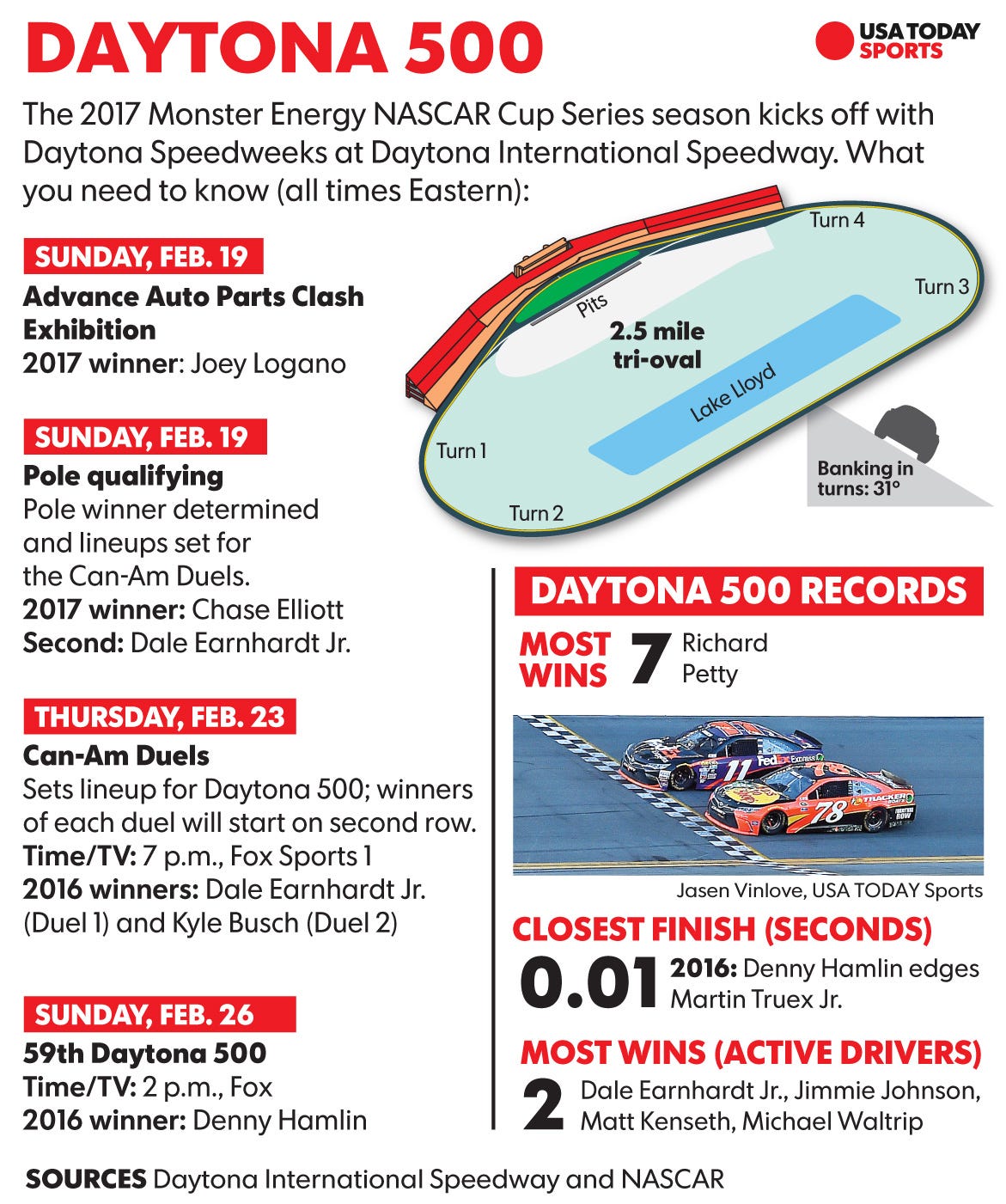NASCAR working to find best way to assess concussions

DAYTONA BEACH, Fla. — NASCAR driver Jamie McMurray uttered words that make concussion experts cringe.
“It’s a doctor’s opinion,” McMurray told reporters at Daytona 500 media day Wednesday. “I wish they would leave that up to us. Only you know how you feel.”
McMurray held up one example of letting NASCAR drivers police themselves on concussions in star Dale Earnhardt Jr. The rub: Earnhardt raced three times after the wreck at Michigan International Speedway in June that was pinpointed as when he was concussed before he shut it down for the final 18 races of the 2016 Monster Energy Cup Series season.
He’s also a multimillionaire who could have walked away from racing years ago, a luxury few in sponsor-covered fire suits who filed in to talk to reporters here have. And let’s not forget Earnhardt admitted to not reporting concussion-like symptoms during the 2002 and 2012 seasons as he continued to race. But after he missed two races in 2012, he began taking concussions more seriously, visiting with specialists at the University of Pittsburgh Medical Center for Sports Medicine. And last season, before he was sidelined again, he said he would donate his brain to science to help further studies.
“We like to sweep it all under the rug as drivers like we feel fine, nothing’s wrong,” Danica Patrick told reporters Wednesday.
Patrick admitted she has sustained numerous concussions, but has never missed a race due to injury. Before the 2012 season began, NASCAR officials reported they identified 29 concussions among its top three series since 2004. In the past five seasons, 21 more have been diagnosed, according to The Associated Press.
RELATED COVERAGE:
Danica Patrick says she has gotten numerous concussions during her career
NASCAR makes safety push with traveling medical team, enhanced testing
NASCAR announces updated concussion protocol for drivers
Dale Earnhardt Jr. 'won't have any regrets' to keep racing or walk away
Drivers praised NASCAR’s recently announced changes that give infield doctors a new concussion assessment tool and the addition of a traveling safety team, which bolsters continuity of care. Former champ Kevin Harvick said the latter change wouldn’t have happened had it not been for the 10-member driver council that pushed for a regular crew of responders that other series like IndyCar have had for years.
“I don’t think that there was anybody in NASCAR that would have told you they need a traveling safety team,” Harvick said. “The driver council pushed on that and voiced their concerns on that, and NASCAR listened and made it happen. When that conversation came up, (NASCAR officials) said there was not a need for it. All of a sudden, the more voices spoke up, they listened.”
Harvick opined “the final straw” that made NASCAR open to the idea of a traveling safety team was the handling of Matt DiBenedetto, an Xfinity Series driver who was placed into the series’ concussion protocol after a wreck at Texas Motor Speedway in November.
DiBenedetto was kept out of the Cup race a day after the wreck, although later testing showed he wasn’t concussed.
“I was fine,” DiBenedetto told USA TODAY Sports. “I went to the gym and lifted the next day.”
PHOTOS: 2017 Monster Energy NASCAR Cup Series schedule

DiBenedetto echoed Harvick and other drivers on the positive development of a traveling safety team, although currently the crew will only work Cup race weekends.
“The more they can be familiar and know you individually, the better,” DiBenedetto said. “It’s more important than I ever would thought before going through this process. I was naïve. When I got into the infield care center, (the doctor) said, ‘Oh, you’re being quiet.’ He took that into consideration. That was me just being frustrated and wanting to get in and out of the care center.”
Brad Keselowski, another former champ, said NASCAR “has to find a definitive way” to diagnose a concussion, although the series uses a combination of two tests — ImPACT and SCAT-3 — that are commonplace in other sports. The tests used by medical providers include memory retrieval, balance and an inventory of physical symptoms.
“Until we can do that, we are going to have two end results,” Keselowski said. “Either drivers are going to sit out when they don’t have a concussion or we are going to have long-term effects where drivers face multiple concussions and develop CTE.”
RELATED:
CTE: What we know about the progressive, degenerative disease
Chronic traumatic encephalopathy is the debilitating degenerative brain disease caused by repeated head trauma. Currently, the only scientifically accepted way to diagnose CTE is in a postmortem examination of the brain.
But researchers are working on a way to diagnose CTE in a living patient and ways to identify concussions via a blood draw or through brain imaging.
“There will be a lot of major developments when it comes to this research,” Kevin Hrusovsky, the executive chairman & CEO of diagnostic lab equipment maker Quanterix, told USA TODAY Sports.
Hrusovsky, however, said that such testing is a couple years from commercially available.
“Until that tool exists, all of sports will be playing from behind,” Keselowski said.
Contributing: Brant James
Follow Perez on Twitter @byajperez and James @brantjames
